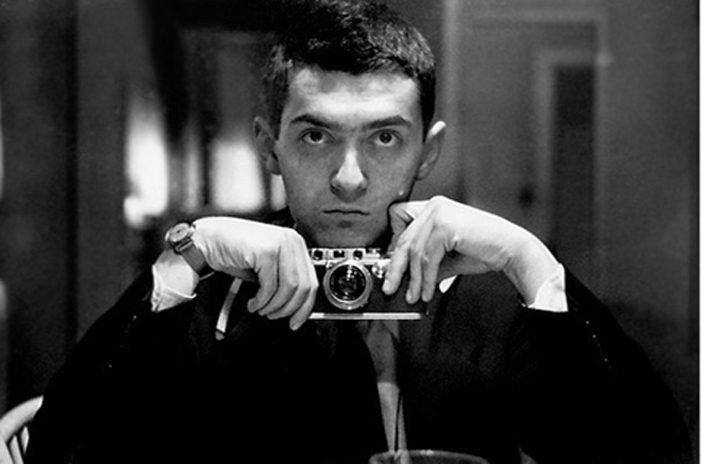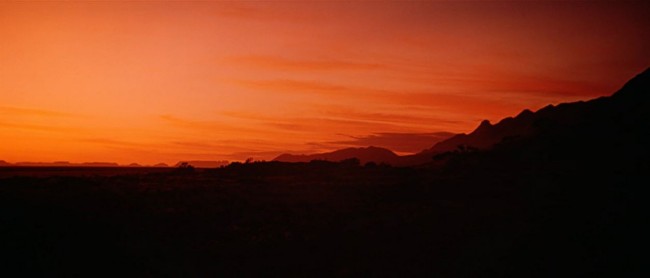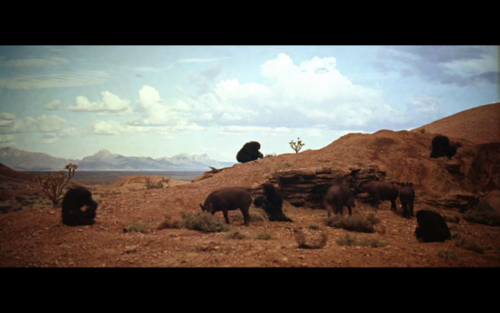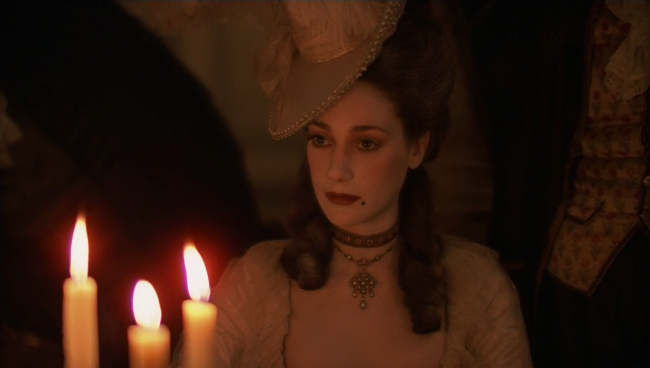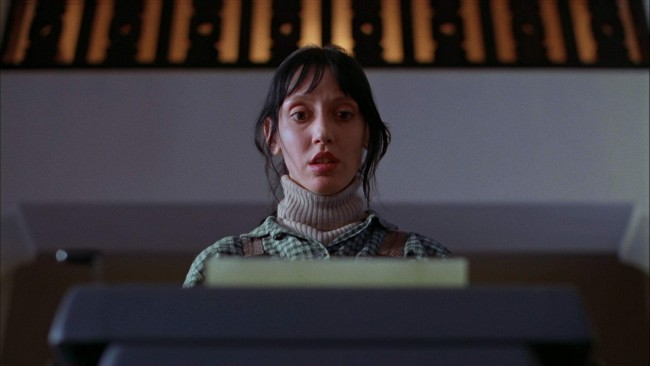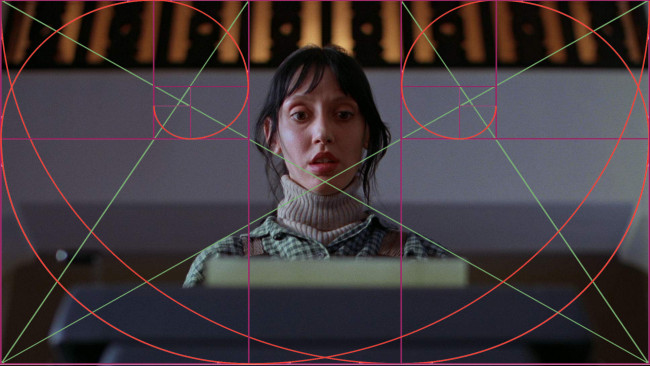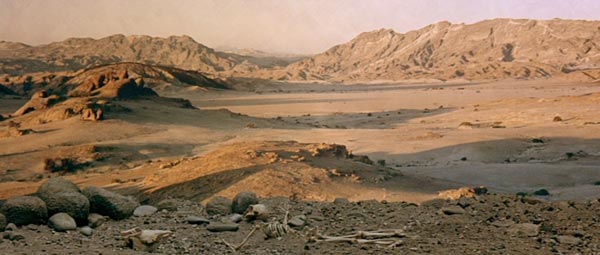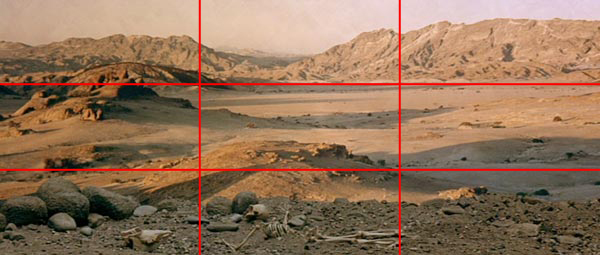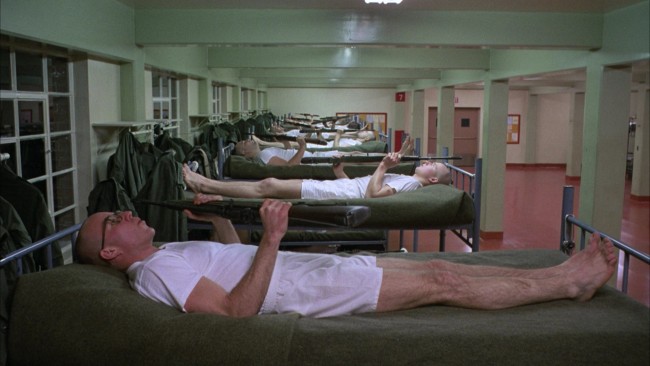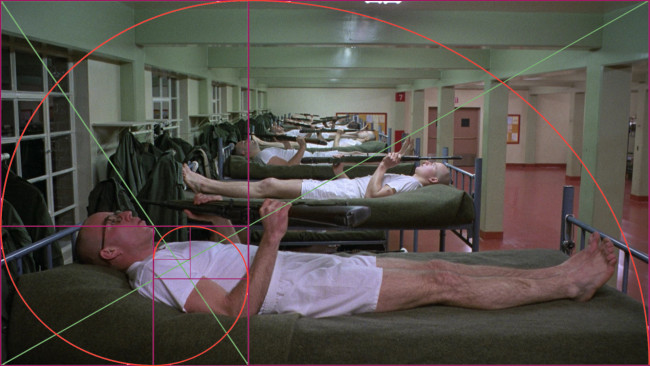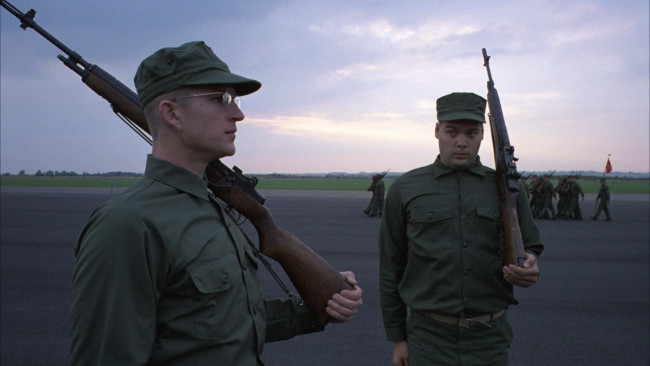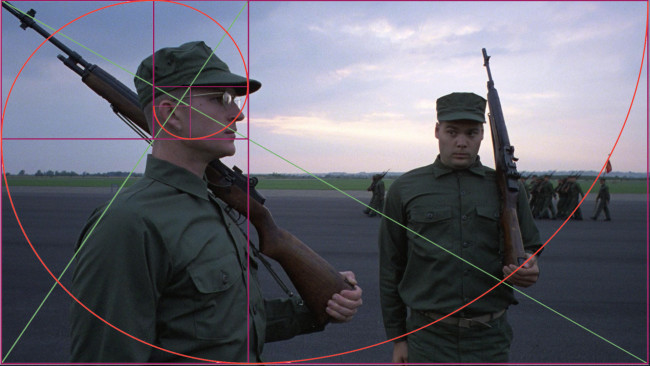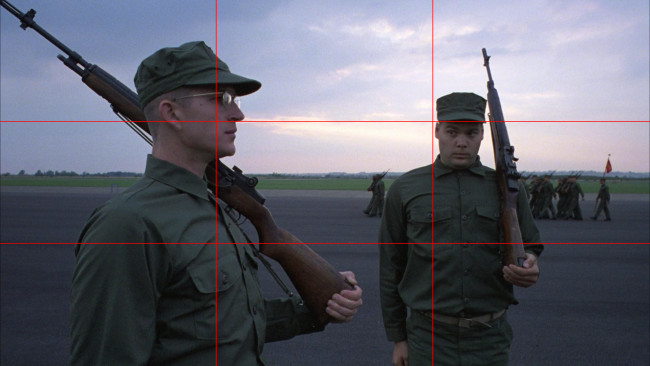Stanley Kubrick, 1928-1999
Tuesday, October 13th, 2015
A shot from 2001: A Space Odyssey (1968).
Stanley Kubrick was an American film director, writer, producer, and photographer, who lived in England during most of the last four decades of his career. Kubrick was know for his perfectionism, slow method of working, the variety of genres he worked in, reluctance to talk about his films and his reclusiveness. He strived to obtain complete artistic control, but with the advantage of large financial support for all of his films.
Kubrick’s films are characterized by a formal visual style and meticulous attention to detail. His later films often had elements of surrealism, expressionism and often lack a structured linear narrative. His films are frequently described as slow and methodical, and are often perceived as a reflection of his obsessive and perfectionist nature. He worked in a wide variety of genres: science-fiction, horror, period dramas and war films. There are however recurring themes in all his films, notably man’s inhumanity to man. While often viewed as expressing an ironic pessimism some critics feel his films contain a cautious optimism when viewed more carefully.
Many of Kubrick’s films when released met with lukewarm reception, only to be acclaimed years later as masterpieces that had a seminal influence on later generations of filmmakers. One such film that was considered ground breaking was 2001: A Space Odyssey (1968). It was noted for being one of the most scientifically realistic and visually innovative science-fiction films ever made while also maintaining an enigmatic non-linear story line. He voluntarily withdrew his film A Clockwork Orange (1971) from Great Britain, after it was accused of inspiring copycat crimes. All of Kubrick’s films from the mid-1950s onward, except The Shining (1980), were nominated for Oscars, Golden Globes, or BAFTAs. Although he was nominated for an Academy Award as a screenwriter and director on several occasions, his only personal win was for the special effects in 2001: A Space Odyssey.
A shot from 2001: A Space Odyssey (1968).
Even though all his films, apart from the first two, were adapted from novels or short stories, his works have been described as “original and visionary” and “one of the most universally acclaimed and influential directors of the postwar era, standing unique amongst the filmmakers of his day.”
A shot from Barry Lyndon (1975).
Kubrick also made innovative use of Zeiss camera lenses for photographing scenes lit only by actual candlelight in Barry Lyndon (1975). In an interview, Kubrick relates how he felt that most films containing candle-lit scenes look phony, due to the artificial light flickering off-camera. Kubrick wanted the more authentic look of 19th-century paintings.
The Shining, was adapted from the novel of the same name by best selling horror writer Stephen King. The film stars Jack Nicholson as Jack Torrance, a failed writer who takes a job as a winter caretaker of the isolated Overlook Hotel. He lives there with his wife, Wendy (played by Shelley Duvall) and their young son, Danny (played by Danny Lloyd), who is gifted with a form of telepathy. As winter takes hold, the family’s isolation deepens, and the demons and ghosts of the Overlook Hotel’s dark past begin to awaken, driving Jack into a homicidal psychosis.
The first shot is a very long aerial shot, following a car from behind as it drives along a winding mountainous road. The entire film is full of long takes that create suspense but also serve to establish the setting. Once the family arrives at the hotel, the edit moves to medium shots inside the hotel where the camera follows Jack. The camera pans to the right as Jack walks towards the reception desk and then continues to follow from behind into the office all in the same take.
A shot from The Shining (1980).
I have applied the Golden Ratio to this shot to reveal that Wendy is directly central in the composition.
Kubrick was also among the first to use the revolutionary Steadicam in the film to allow for smooth stabilized tracking with the camera in motion, without the use of a dolly. The inventor of the Steadicam, Garrett Brown, became heavily involved with the production, as he believed The Shining was the first film to fully realize the Steadicam’s full potential, going well beyond “stunt shots and staircases”. The use of the Stedicam helped convey the claustrophobic oppression of the haunted hotel, The Shining particularly gave rise to the legend of Kubrick as a perfectionist. Reportedly demanding hundreds of takes of certain scenes accumulating approximately 1.3 million feet of film. Much of the films imagery, such as the elevator shaft disgorging blood and the ghost girls in the hallway, are among the most recognizable and widely known images from any Stanley Kubrick film
Kubrick spent five years developing his next film, 2001: A Space Odyssey. The film was conceived as a cinerama spectacle and was photographed in Super Panavision 70mm. The film opened in widescreen Cinerama and initially toured as a “roadshow” picture, with program booklets sold in the lobbies of the theatre. Although it eventually became an enormous success, the film was not an immediate hit. Like most of his films, the initial criticism attacked the film’s lack of dialogue, slow pacing, and seemingly impenetrable story line. In spite of initial negative critical reaction, many today consider it among the greatest science fiction films ever made, as well as one of the most influential. Steven Spielberg called it his generation’s “big bang”.
A shot from the Dawn of Man sequence in 2001: A Space Odyssey (1968).
I applied the rule of thirds to this shot show that the top horizontal third is lined up with the landscape just before it becomes mountains.
Kubrick was first a photographer for several magazines before he became a film director. Many of the cinematographers in Kubricks films have not produced anything as big before or after working on them, and most do not work on following productions. It is through these facts that we can assume that Kubrick was the primary cinematographer in his films. His passion and perfectionism also help support this assumption.
A shot from Full Metal Jacket (1987).
The golden ratio can be seen being used to position Cowboy within the frame.
A shot from Full Metal Jacket (1987).
The golden ratio is used to position Joker within the frame. The distance between the mouth and eyes also fits perfectly with the fibonacci sequence. His rifle runs releativley parallel with the diagonals.
You can see with the rule of thirds applied that one of the verticle thirds runs through Jokers eye and the opposite third lines up next to Piles head.
Back To Blogs
